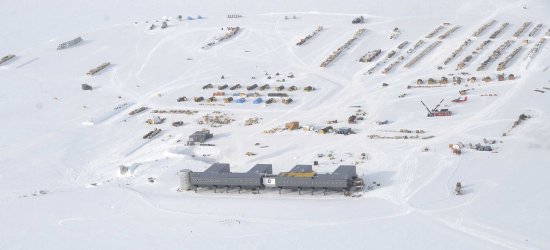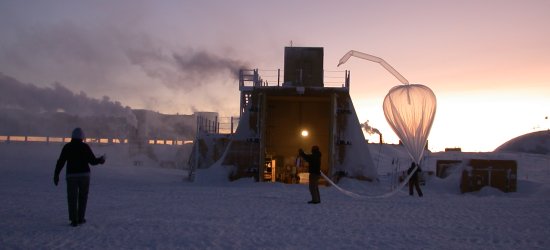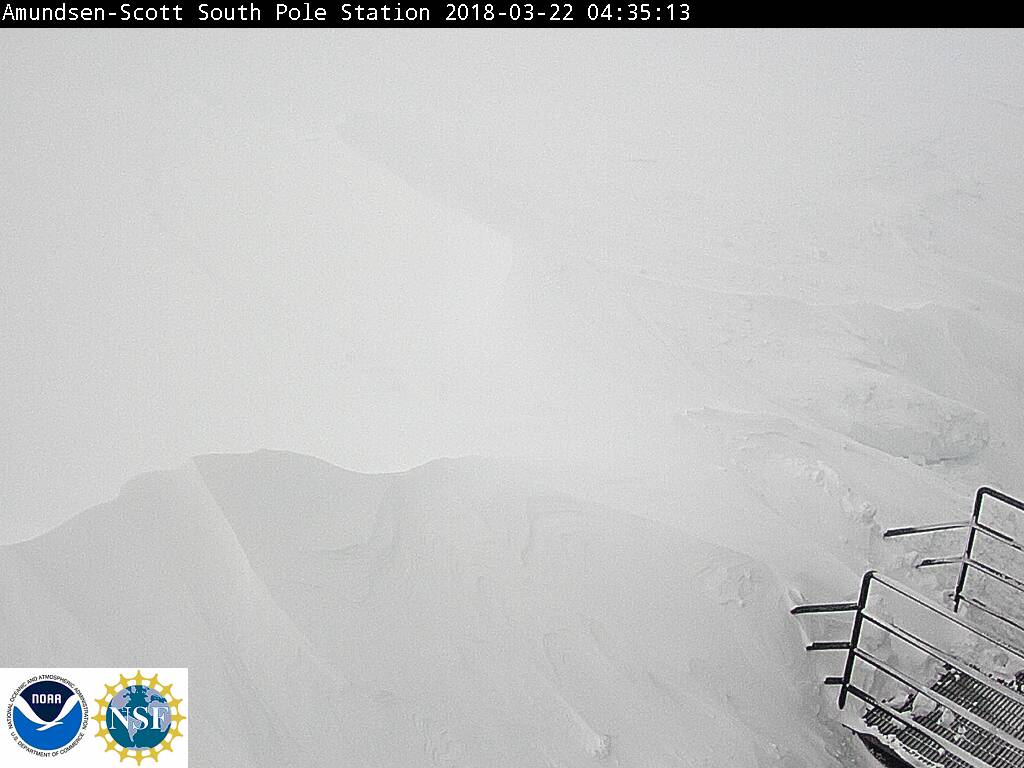It’s Lights Out at the Bottom of the World, for Now
[The sun goes down at the South Pole: The last light of autumn from Tuesday bathes an array of flags from the 12 nations that were the original signatories on the 1959 Antarctic Treaty who pledged that they would pursue non-military, cooperative scientific research. Courtesy of Robert Schwarz/University of Minnesota]
From NOAA
The spring equinox in the Northern Hemisphere feels like a moment of promise, as the year swings toward warmth, birdsong and blossoms. For researchers at NOAA's South Pole Atmospheric Baseline Observatory, March 20 was a different kind of seasonal marker: A dimming sun dropped below the horizon and won’t rise again for six long months.
 [South Pole Observatory. Photograph by Andrew V. Williams, National Science Foundation]
[South Pole Observatory. Photograph by Andrew V. Williams, National Science Foundation]
NOAA’s observatory is part of the U.S. Amundsen-Scott South Pole Station, the coldest, highest and most remote research facility on the planet. In winter, it’s so cold aircraft systems don’t work. Scientists and support staff are on their own until late October.
For Lt. Cherisa Friedlander, South Pole Station chief of NOAA's first all-women crew, the summer has already been “incredibly rewarding.” “It’s impressive to see how many scientists are Antarctic ‘veterans’ and come back for another research season,” she said, evidence of the draw this harsh continent has on people.

[South Pole Observatory. Photograph by Andrew V. Williams, National Science Foundation]
The duty is hard: The daily climbs up a metal tower in numbing winds to clear ice from the inlets of measuring instruments, the monotony of making the same measurements day after day, the persevering through extraordinary cold and unending night. The work requires a positive attitude and mental and physical hardiness to be away from family, friends and civilization for that long.
But the rewards are rarified. Few humans will ever experience the vastness of the southern skies and rippling pulses of the Southern Lights like those who "overwinter" at the South Pole.
“I continually remind myself of how many women would love to be in the same position as me if they could,” said Friedlander. “My mother tells me every day how proud she is and how she could never do something like this — but, the woman raised five kids. I think she could do anything!” You can watch the NOAA’s South Pole live web camera at this link. Edited for WeatherNation by Meteorologist Mace Michaels
Edited for WeatherNation by Meteorologist Mace Michaels